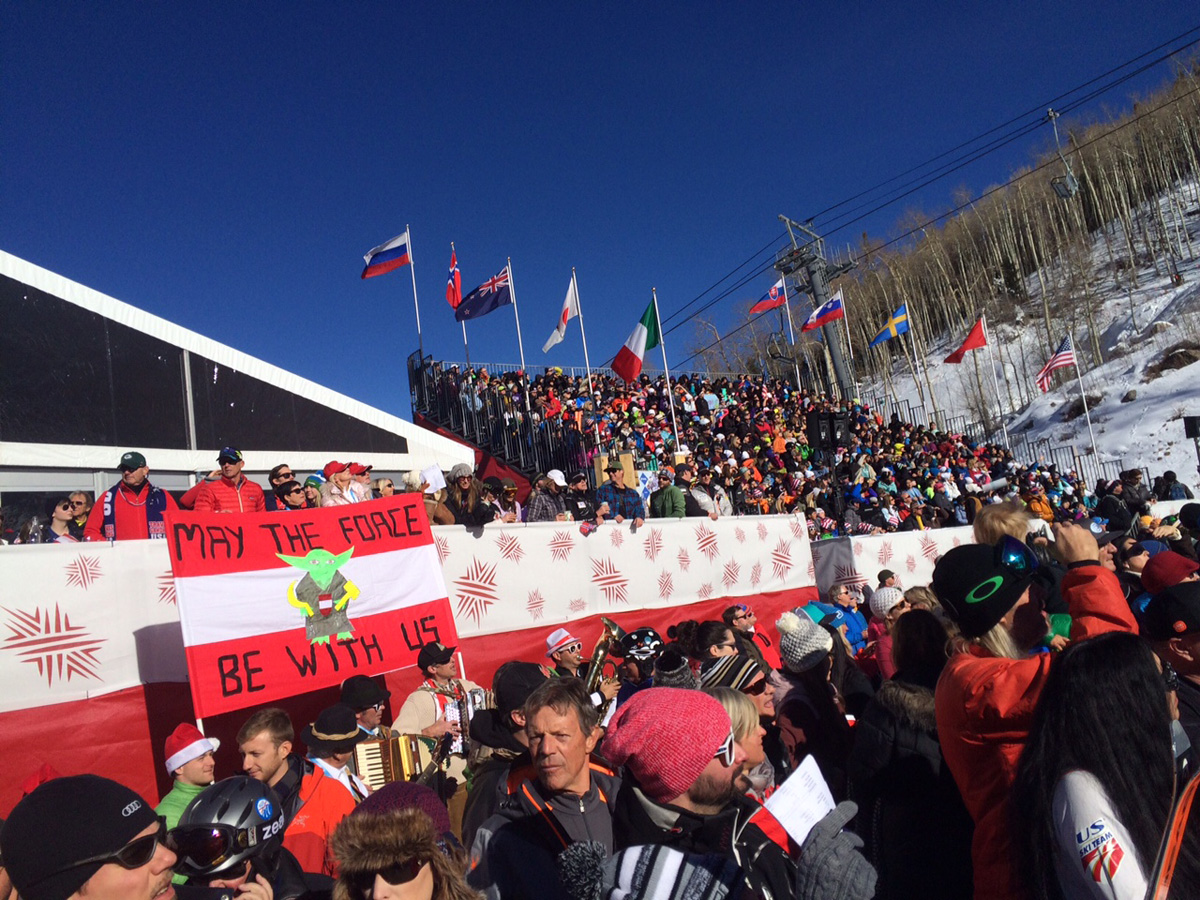The Local newsletter is your free, daily guide to life in Colorado. For locals, by locals.
In Austria, the world’s fastest skiers possess a celebrity status akin to Peyton Manning here in Colorado. But in the United States, World Cup racers are more or less unrecognizable, unless you’re a die-hard fan. Last weekend, the 2015 Audi Birds of Prey World Cup landed in Beaver Creek, marking the tour’s only U.S. stop. So we wondered: How does racing here compare to skiing in Europe? Here’s what the top competitors had to say:
The Snow Here Is Awesome
This is no surprise, right? Even on an alpine racecourse, rock solid by design, World Cup racers consistently rave about the quality of snow in Beaver Creek and Colorado as a whole (most national teams train at Copper Mountain early in the season).

“From a racing standpoint, the snow is a lot different over there, so that’s always an adjustment,” says veteran U.S. alpine skier and California native Marco Sullivan. “In Europe it’s icier. They tend to not prepare the courses as well … on purpose. They make them bumpier and gnarlier than at Beaver Creek.”
“The snow [here] is perfect,” agrees American racer Travis Ganong, who won a silver medal in the men’s downhill at the FIS Alpine World Ski Championships in Beaver Creek last February. “It’s a perfect arena to just send it, and everyone can push it as hard as they want.”
Skiing in Europe Is A Lifestyle
The snow might be better in the U.S.—and definitely in Colorado—but Ganong believes that when it comes to skiing in general, Europeans have their priorities straight.
“I feel more in my element in Europe,” says Ganong, who hails from Squaw Valley, Calif., and has a retirement plan (far in the future) to open European-style mountain huts across the U.S.
“The whole continent is in love with skiing. Skiing is a huge deal there,” he says. “Everywhere you go, people recognize you and support you. Here, you walk around and nobody really knows what’s going on. European ski culture is amazing. People are out there having fun being in the mountains, being in the sun, having a good meal on top of the mountain somewhere, whereas here it’s more of a competitive thing. People track their vertical and see how many runs they can get in. It’s totally a different mentality.”
The History of Skiing Runs Deep in Europe
Alpine skiing is the most prominent sport in Austria, where several World Cup races take place season after season and have for decades. As with the rest of Europe, a World Cup event illuminates the town with festive energy, the same way a Broncos game does in Denver. Except in Europe, the party lasts the whole weekend.
At the World Championships in Beaver Creek last February, there were around 10,000 spectators each day. The Birds of Prey World Cup races draw about 6,500 spectators per day, and that’s a generous estimate. In Kitzbuhel, Austria—the World Cup’s most notorious stop—it’s not unusual for a cowbell-clamoring crowd of 50,000 or more to turn up on downhill day.
Races have been happening on Kitzbuhel’s infamous Hahnenkamm course for nearly 80 years, and at other European venues—such as the majestic Lauberhorn in Wengen, Switzerland—the tradition goes back even further.
“Skiing is more of a lifestyle in Europe,” Sullivan says. “They really appreciate World Cup racing because it has so much history. Beaver Creek has cultivated a great crowd over the years, for sure. But compared to Wengen, where it’s the 87th time they’ve run it or something … [Colorado] has about 18 years of history compared to that. If you do well at a race in Wengen or one of those places, it’s cool to see your name alongside that guy who won the race 50 years ago, who’s a skiing legend.”
Skiers Are Rock Stars in Europe
Suffice it to say that today’s top skiers are living legends in Austria. This is cool for U.S. racers, whose fame (and not to mention pay) pales in comparison to NFL and NBA stars, tennis players, golfers, and many other professional athleteshere in the States. For Europeans, the fanfare gets old. Hannes Reichelt, one of Austria’s best skiers and a gold medal winner in the Super G at the 2015 World Championships, says he relishes the peace and anonymity of training and racing in Colorado.
“I like to race here because you can go with your team jacket for a coffee and nobody is watching you, asking about an autograph,” says Reichelt. “If you do that in Kitzbuhel or Austria somewhere, you can’t drink a coffee.”
Norwegian champion Aksel Lund Svindal, who won his third straight World Cup gold in the downhill on Friday, also appreciates the abridged fanfare in the U.S.
“It’s not as intense,” he says. “We come here for the training, for the conditions, obviously, but I think that’s a nice benefit. It gives you a little more peace to focus on what you’re actually doing.”








